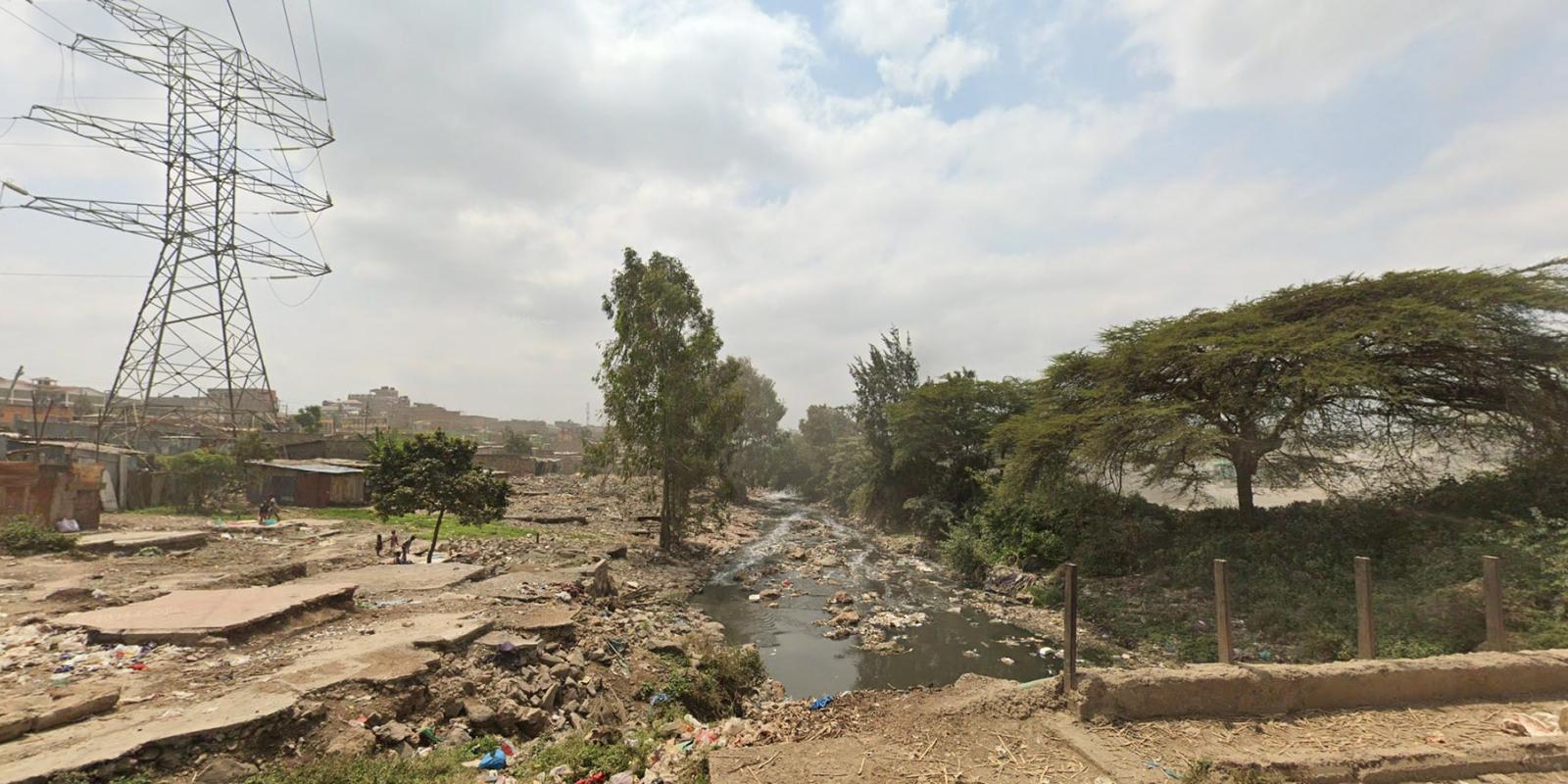
The city of Nairobi experienced unprecedented heavy rainfall in April 2024, which caused severe flooding. This rainfall led to a government directive for households living within the 30-meter riparian zone in many informal settlements to relocate.
The impact on informal settlements was a significant loss of lives and property. The flooding was so severe that it displaced hundreds of households in the informal settlements. In response to the floods and the hazardous living conditions, forced evictions were carried out. These evictions, intended to mitigate future risks and address the immediate dangers posed by the floods, displaced thousands of households and have left vast stretches of previously occupied land vacant.
Rationale
Kenya faces significant water scarcity, exacerbated by heavily polluted rivers contaminated with faecal matter, solid waste, and industrial pollutants. The Ngong River joins the Nairobi River and eventually flows into the Athi River, a crucial water source for the semi-arid regions of Ukambani and seven counties. However, the water quality is severely compromised, rendering it unfit for human consumption or irrigation. This highlights a significant environmental issue affecting the region. The government's commitment to improving water quality is crucial for downstream communities that rely on this resource. One of the major sources of pollution is informal settlements lacking adequate sanitation systems.
Informal settlements in Kenya are characterized by high population density and a severe lack of public amenities, water and sanitation services, and recreational spaces. The residents of Mukuru, one of the focus areas, have been working closely with a consortium of civil society and government organizations to enhance sanitation in these areas. Through collaborative initiatives with the government, the residents aim to reduce waste entering the Ngong River, contributing to broader water quality improvements.
It is important to note that, without a proper revitalization and management plan, land recovered from informal settlements often tends to be reoccupied informally. This results in wasted efforts and resources, highlighting the need for sustainable solutions to prevent such setbacks. The significance of this proposed case study will extend beyond local impacts, offering valuable insights into working with urban poor communities and local partners to develop and implement sustainable plans. The project’s approach will demonstrate how improving sanitation and creating green spaces can enhance the quality of life in informal settlements. It will also showcase the potential for community ownership, utilization, and maintenance of riparian spaces, serving as a blueprint for other African cities experiencing rapid urban growth.
This project will also align with the city’s long-standing vision of transforming the riverfront and riparian reserves into non-motorable transport spines, offering a model for urban mobility and revitalization. It will also focus on utilizing available space for green infrastructure and recreation, addressing the critical need for public spaces and integrating the riparian ecosystem with the broader human settlement networks such as housing and infrastructure.
By sharing lessons learned from this initiative, the case study will provide a replicable framework for integrating environmental sustainability with urban development. It will highlight the importance of collaborative efforts between communities, NGOs, and government entities in addressing complex urban challenges and fostering resilient, inclusive cities. This project will also create a replicable model that showcases the potential for turning crisis into opportunity.
Strategy
In 2017, the Nairobi City County Government of (NCCG) designated three informal settlements in Mukuru as special planning areas. This declaration required the government to develop people-centered plans. During planning consultations, residents expressed a desire to transform the riparian zones in their settlements into green spaces for recreation. The proposed project aims to realize this community vision through a strategic and participatory planning process.
To achieve this goal, the consortium will work closely with communities to develop river regeneration plans. As an initial step, the consortium has begun engaging the community in forming a "River Movement." The aim of this movement is to ensure that the community is at the center of the planning process, with their needs and aspirations guiding all efforts.
Methods
The consortium will tell the story of the river-city nexus through a multifaceted approach combining archival research and multimedia storytelling. This methodology will ensure a rich and diverse portrayal of the river's historical and contemporary significance to the communities it traverses.